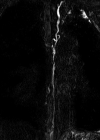Nodal and Pedal MR Lymphangiography of the Central Lymphatic System: Techniques and Applications
- PMID: 32773950
- PMCID: PMC7394572
- DOI: 10.1055/s-0040-1713442
Nodal and Pedal MR Lymphangiography of the Central Lymphatic System: Techniques and Applications
Abstract
Novel lymphatic imaging and interventional techniques are increasingly used in the diagnostic workup and treatment of pathologies of the central lymphatic system and have opened a new field of interventional radiology. The mainstay of lymphatic imaging today is magnetic resonance lymphangiography (MRL). It provides information on the anatomy of the central lymphatic system, lymphatic flow, as well as lymphatic pathologies and therefore is a valuable tool for treatment planning. There are two techniques to perform contrast-enhanced MRL: nodal dynamic contrast-enhanced MRL (nodal DCE-MRL) and interstitial transpedal MRL (tMRL). Nodal DCE-MRL yields superior information on lymphatic flow dynamics and is therefore best suited for suspected lymphatic flow pathologies and lymphatic malformations. tMRL is a technically simpler alternative for central lymphatic visualization without the need for sonographically guided lymph node cannulation. This review article describes current MRL techniques with a focus on contrast-enhanced MRL, their specific advantages, and possible clinical applications in patients suffering from pathologies of the central lymphatic system.
Keywords: MR lymphangiography; chylothorax; chylous ascites; interventional radiology; lymphatic leakage; lymphatic malformation.
© Thieme Medical Publishers.
Conflict of interest statement
Conflict of Interest C.C.P. is a consultant and/or part of the Speakers Bureau and/or received education grants from Guerbet, Philips Healthcare, and Bayer Vital.
Figures










References
-
- Clément O, Luciani A. Imaging the lymphatic system: possibilities and clinical applications. Eur Radiol. 2004;14(08):1498–1507. - PubMed
-
- Pieper C C, Hur S, Sommer C M et al.Back to the future: lipiodol in lymphography-from diagnostics to theranostics. Invest Radiol. 2019;54(09):600–615. - PubMed
-
- Schild H H, Naehle C P, Wilhelm K E et al.Lymphatic interventions for treatment of chylothorax. RoFo Fortschr Geb Rontgenstr Nuklearmed. 2015;187(07):584–588. - PubMed
-
- Itkin M, Kucharczuk J C, Kwak A, Trerotola S O, Kaiser L R.Nonoperative thoracic duct embolization for traumatic thoracic duct leak: experience in 109 patients J Thorac Cardiovasc Surg 201013903584–589., discussion 589–590 - PubMed

